 E012
Mercedes City Park 1909
E012
Mercedes City Park 1909
This postcard shows an early view of Mercedes City Park. The grounds are not yet landscaped, but there are several native Sabal Palms on the right side. A white fence surrounds the park, and the streets are unpaved and rutted. The building near the center is the original American Rio Grande Land and Irrigation building, and to its right, a corner of the Mercedes Hotel Annex building can be seen. The train depot was to the left of the park, and the main Mercedes Hotel building was on the south side of the unpaved road.
View Enlarged
View Library
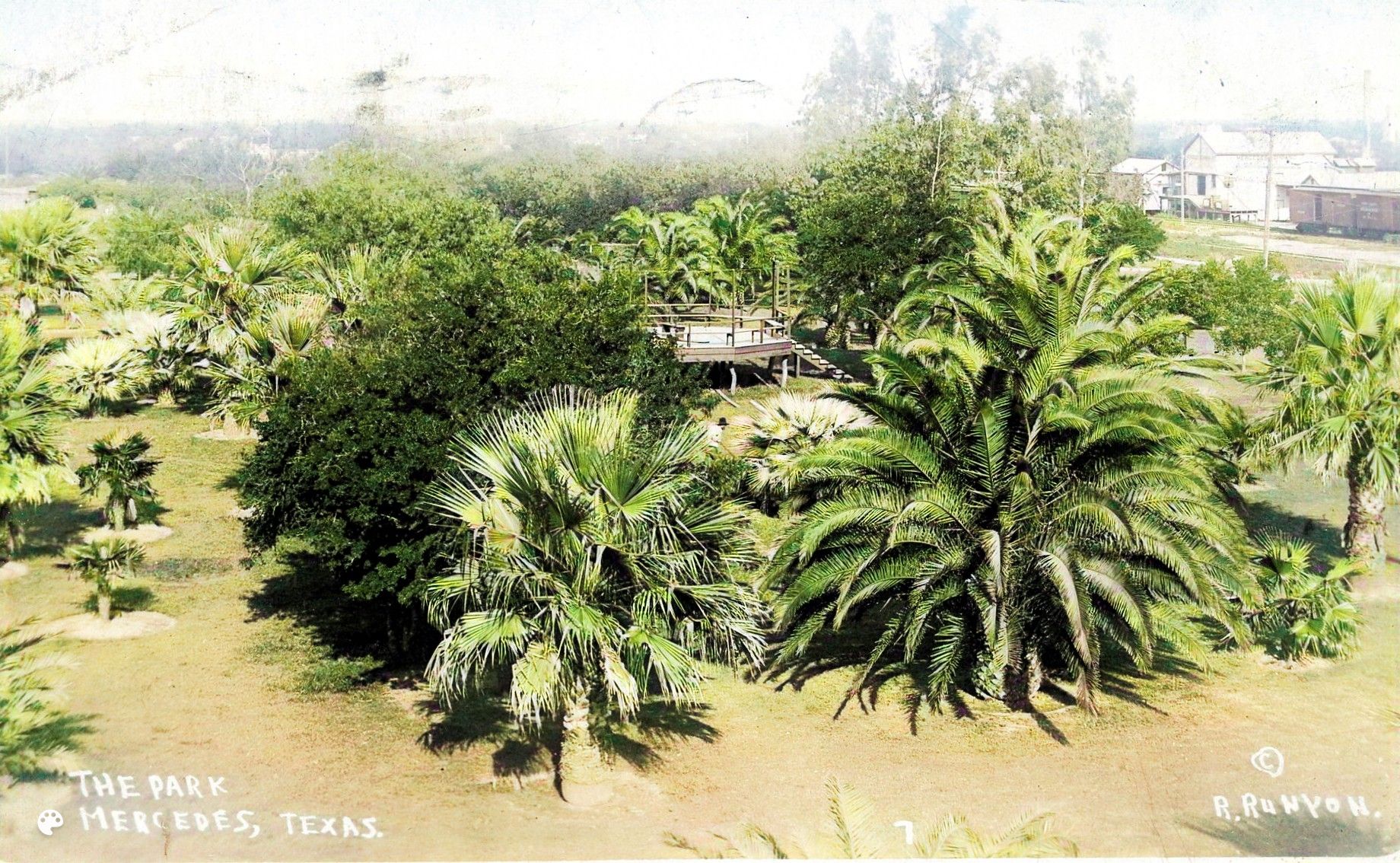 R001
Residents Met Arriving Trains in Mercedes City Park 1906
R001
Residents Met Arriving Trains in Mercedes City Park 1906
The American Land and Irrigation Company built Mercedes City Park to welcome passengers to the new city. The park plaza featured lush landscaping and had a bandstand. It was located immediately south of the train station, between Texas Avenue and Missouri Avenue. Look closely at the upper right of this postcard to see a railroad car and the temporary train platform. A more permanent Railroad Depot was built a year later. Mercedes author and historian G.G. Garcia recalls that 'people would would stroll around the plaza waiting for the evening train to post letters'. [92]
View Enlarged
View Library
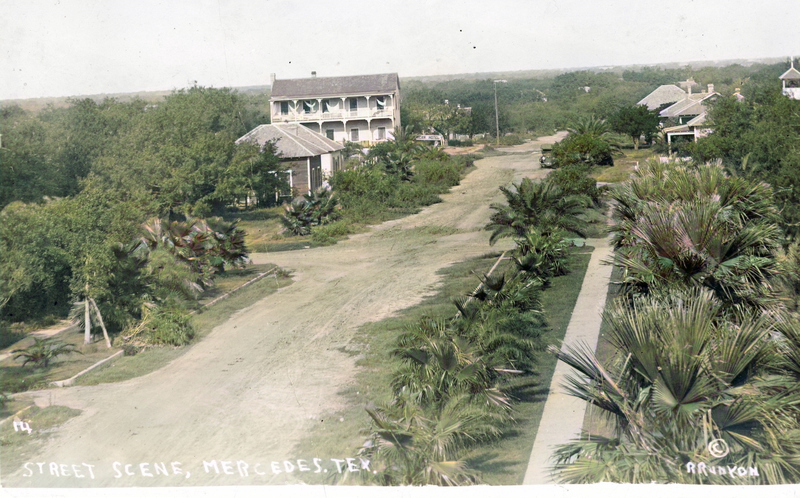 R041
Sabal Palm Tree Lined Mercedes City Park and American Hotel 1906
R041
Sabal Palm Tree Lined Mercedes City Park and American Hotel 1906
This postcard depicts Mercedes City Park, lined with Sabal Palms native to the Rio Grande River Valley, as viewed from the south. The paved path through the park contrasts with the dirt streets. The American Hotel, which provided rooms and meals to thrifty travelers until it closed during the Great Depression, is located in the upper left corner. A closer look at the hotel balcony reveals a hammock hanging outside each room.
The bushy palms on the right are native Sabal Palms. Once abundant in the Mercedes area, many stands were cleared or replaced by non-native palms by the turn of the century. Today, only about 100 acres of Sabal palms survive in Texas, most of them clustered in the Audubon Society's Sabal Palm Grove Sanctuary in Brownsville.[76]
View Enlarged
View Library
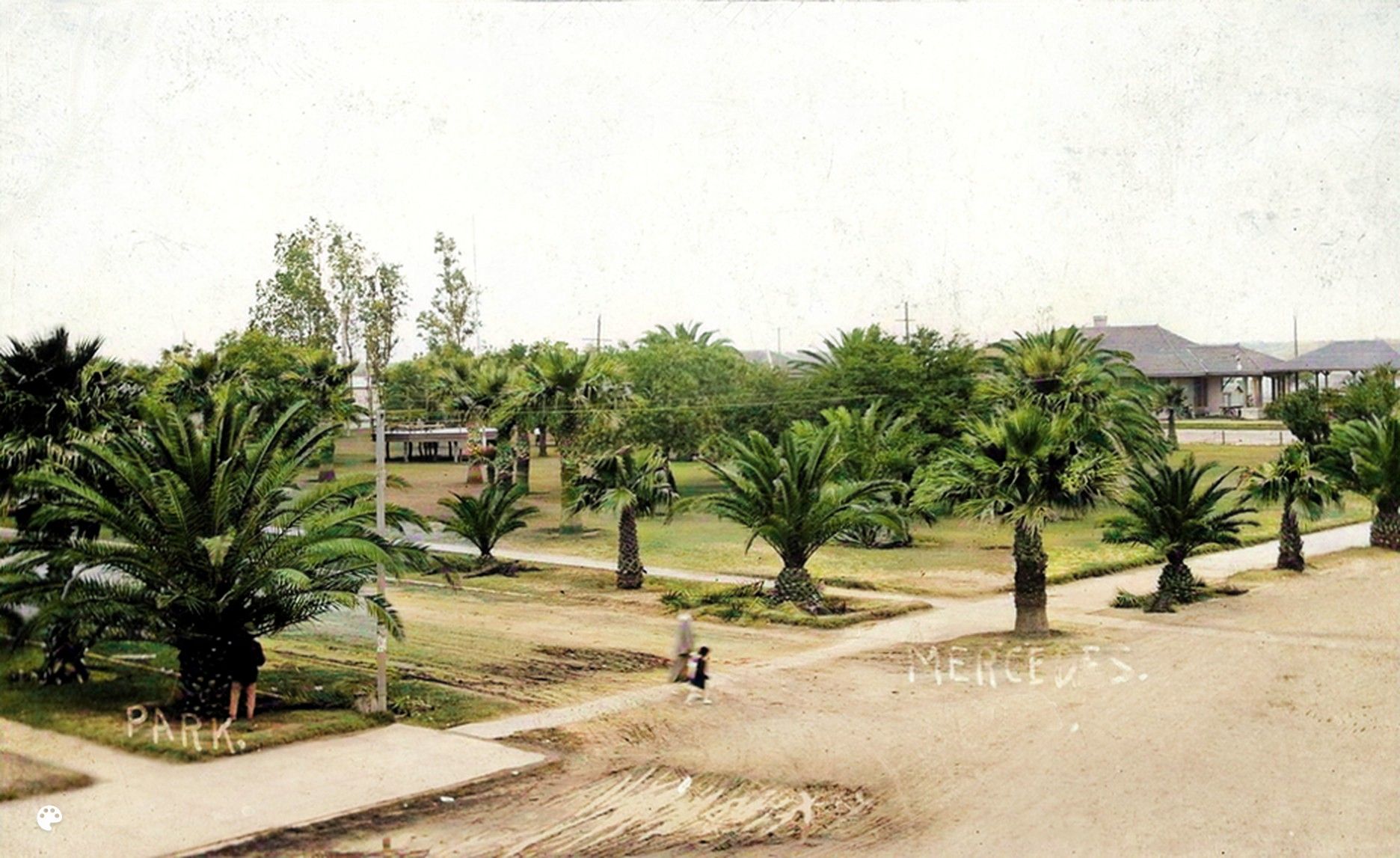 R013
Later View of Mercedes City Park With Railroad Station 1910
R013
Later View of Mercedes City Park With Railroad Station 1910
A later view of Mercedes City Park shows that the temporary railroad station has been replaced by the Mercedes Railroad Depot, a large building with a platform for waiting passengers. The park is more developed. There are sidewalks and electrical power lines, although the streets are still unpaved. If you look closely, you can see a gardener working on the palm trees in the lower right corner of the photo, and a woman and child crossing the sidewalk in the center of the photo.
Mercedes author and historian G.G. Garcia recalls that, having grown up on the side of town where homes had no lawns, 'The only green grass and landscaping I knew was at the city park and the old high school. Imagine growing up without lawn. First Street was caliche and gravel. Our front yards, such as they were, were of hard clay, great for playing marbles and tops, but not much more.' [92]
View Enlarged
View Library
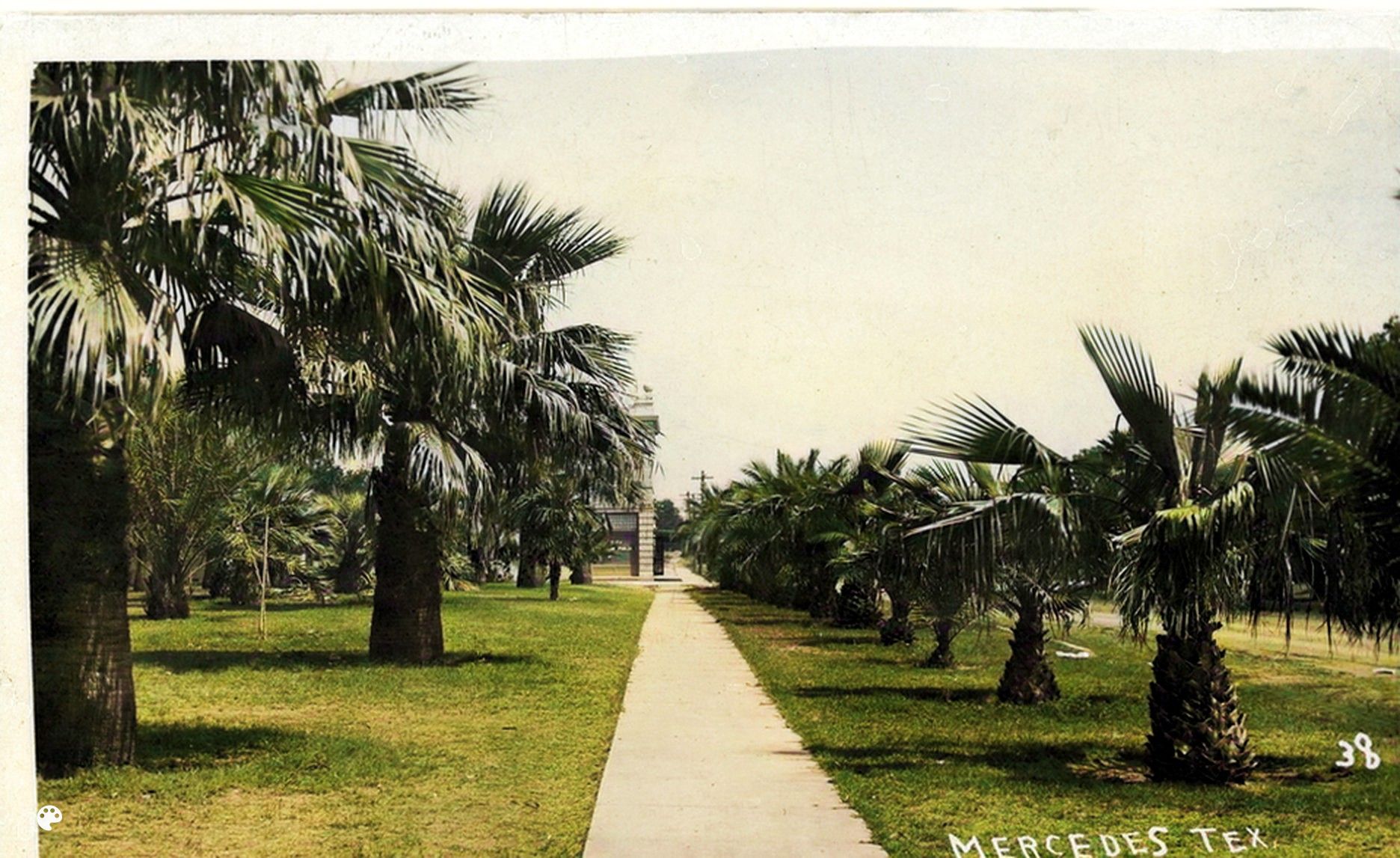 R016
Camp Mercedes Cavalry Band Played Concerts in the Park During WWI 1916
R016
Camp Mercedes Cavalry Band Played Concerts in the Park During WWI 1916
This postcard depicts a sidewalk flanked by palm trees through Mercedes City Park. During World War I, the local newspaper announced almost every weekend that the Cavalry Band from Camp Mercedes would perform a concert in the bandstand at Mercedes City Park. For example, in October 1917, the Mercedes Enterprise reported that 'The Sixteenth Cavalry Band will play from 7 to 8 on Sunday and Wednesday evenings...the courtesy of the performers in giving us the concert is fully appreciated.'
View Enlarged
View Library
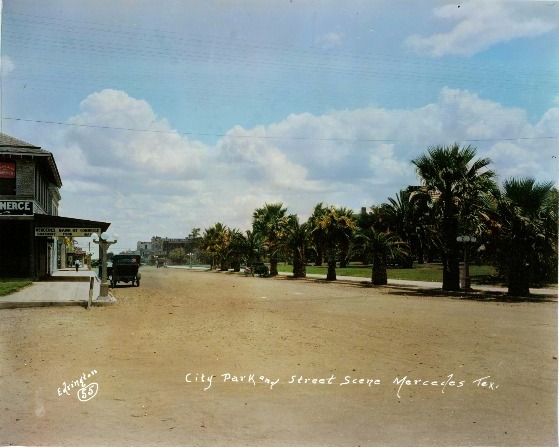 O101
Early Businesses on the Northeast Side of Mercedes City Park 1916
O101
Early Businesses on the Northeast Side of Mercedes City Park 1916
This view looks South from Texas Avenue and the railroad track. On the left is 'Mercedes Bank of Commerce, Guaranty Fund Bank'. Mercedes City Park is on the right. A little past the park the Mercedes Hotel sits back from the road, and just beyond it 'Mercedes Drug Company'. The three bulb street lights and the absence of horse drawn carriages indicate the photograph was taken around 1916.
View Enlarged
View Library
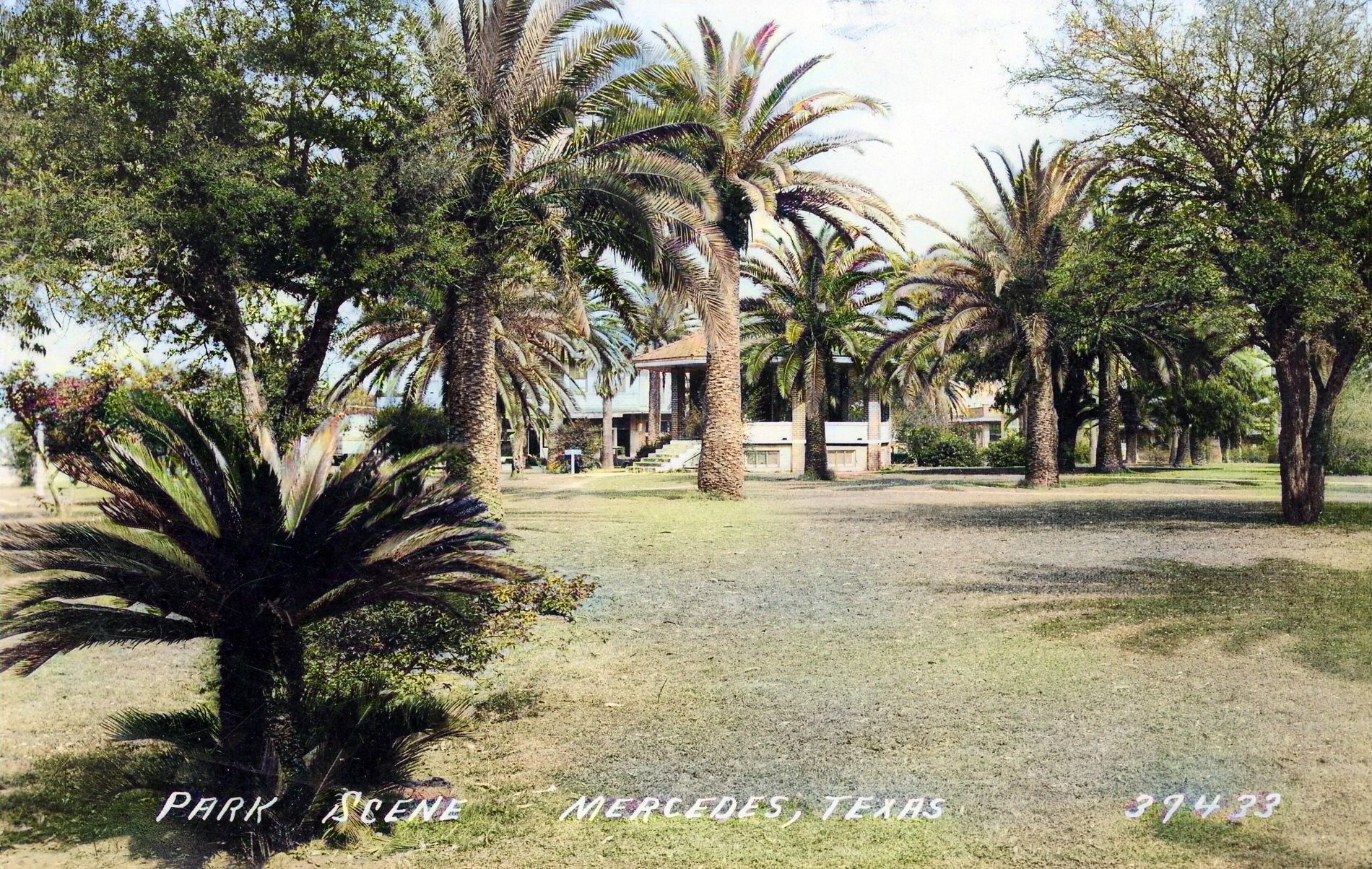 L016
Mercedes City Park Neglected as Automobiles Rise In Popularity 1940
L016
Mercedes City Park Neglected as Automobiles Rise In Popularity 1940
Mercedes City Park was modeled after a traditional Mexican plaza, occupying one square city block and featuring a bandstand in the center. In this 1940s image the park has a larger, new bandstand. The Canary Island Palms are mature and there are no native Sabals to be seen. The park was a favorite gathering place in its early days. However, as automobiles became more popular, people drove to other places for entertainment, and the park had become neglected and ignored by the 1950s.
View Enlarged
View Library
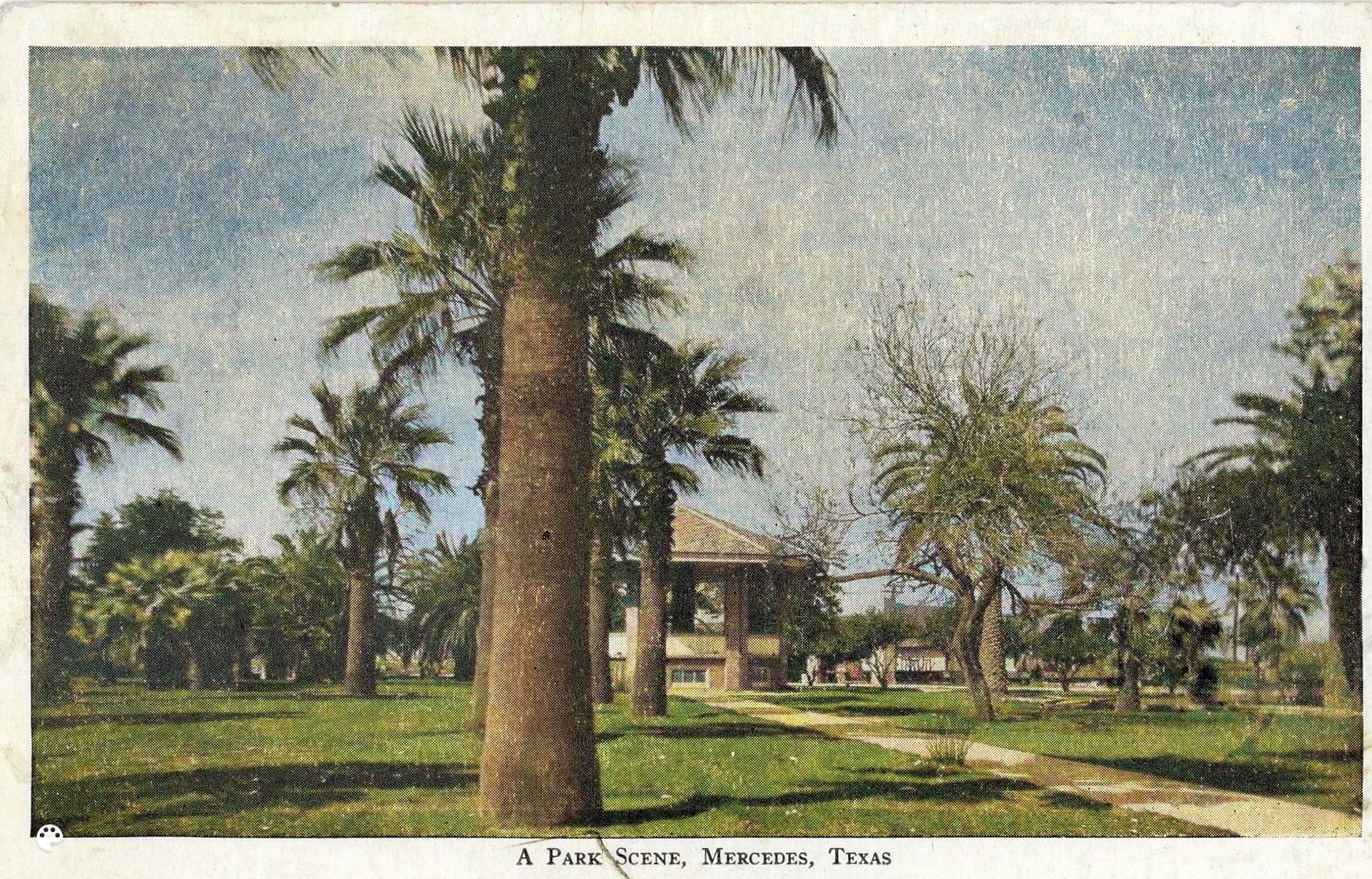 C004
What Became of Mercedes City Park and the Band Stand? 1928
C004
What Became of Mercedes City Park and the Band Stand? 1928
On March 14, 1950, the city of Mercedes auctioned off the park land for $31,000 to Lloyd and Elmer Bentsen for commercial development. The lovely park was replaced by a gas station, Ferg's Foodland grocery, and Anthony's Department Store. [31] Lloyd Bentsen later became a four-term United States Senator (1971–1993) Texas and the Democratic Party nominee for vice president in 1988.
G.G. Garcia, an early resident of Mercedes, became the city secretary in 1968. He recalls finding documents revealing that the city had the option to reclaim the park land from the Bentsens after 20 years, but the option had expired in April 1968, three months before he was appointed city secretary. The bandstand in the park sat on private property for many years, discarded like many other treasures of Mexican culture and the past. [92]
View Enlarged
View Library















